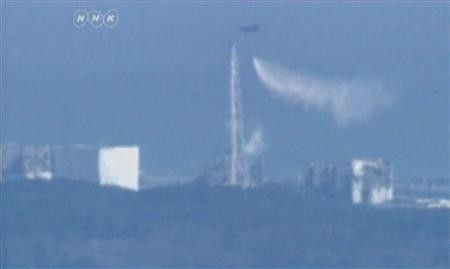Fears growing over radioactive seawater near Fukushima plant

While Japanese nuclear emergency workers intensify efforts to improve cooling systems and restore electrical power at the Fukushima Daiichi atomic plant, government officials are deeply concerned about abnormally high levels of radiation detected in the seawater near the site.
The government’s Nuclear and Industrial Safety Agency said radioactive iodine-131 was detected at a concentration that was an astonishing 1,250 times the legal limit was detected Friday morning in a sample of seawater taken from 330 meters south of the plant, near the drain outlets of its four reactors.
The presence of radiation raises fears about local fisheries.
The utility added that the radioactive water in the plant has flowed out into the sea, explaining that radioactive materials ‘‘will significantly dilute’’ by the time they are consumed by marine species.
Generally speaking, government spokesman Hidehiko Nishiyama told a news conference, radioactive material released into the sea will spread due to tides, so you need much more for seaweed and sea life to absorb it.
Nishiyama added: And, since [the iodine] has a half-life of eight days, by the time people eat the sea products its amount is likely to have diminished significantly.
The agency added that if someone ingested 500 milliliters of water containing the same level of radioactive iodine, the radiation levels would reach the 1-millisievert limit which a human being can be safely exposed to in one year.
Meanwhile Tokyo Electric Power Co. (TEPCO), the plant’s operator, has turned the lights on in the control room of the key No. 2 reactor, while examining radioactive materials detected in the water of the turbine building.
TEPCO originally reported that the radiation level at the No. 1 reactor climbed as high as 200 microsieverts per hour, leading workers to suspend plans to pour seawater into its spent fuel pool. However, company officials later retracted its statement, insisting that such a high radiation level was not detected.
Japan’s chief cabinet secretary Yukio Edano said at a press conference Saturday: ‘‘the current situation is that we are preventing it from worsening,’’ adding that the crisis will require ‘‘an enormous amount of work’’ before it is resolved.
TEPCO plans to keep dumping fresh water into pools storing the spent nuclear fuel at the plant. Simultaneously, they will seek to remove water pools of water containing highly radioactive substances that might have leaked from either the reactor cores or the spent fuel pools.
There is much concern that TEPCO and government officials are not telling the complete story. A Japanese blogger wrote: “Seriously, I think at this point, given TEPCO's incessant lies, we can assume the worst. There is an uncontrolled release of the worst fission products directly into the sea and air from [reactor] 3. No one will say anything definitive although it's clear to everyone else in the whole world that the containment vessel has cracked and hot water is flooding out as we read this story. Since they will never admit it and since the [government] won't either, the problem will persist for months unchecked, with constant assurances that there is no ‘immediate threat to human health’ -- much like a syringe of HIV is not an ‘immediate threat.’”
The blogger added: “Because of TEPCO's complete and utter dishonesty and disregard for life, the whole north of Japan is going to be dangerously contaminated before they even admit that it's already out of control.”
.
© Copyright IBTimes 2025. All rights reserved.





















